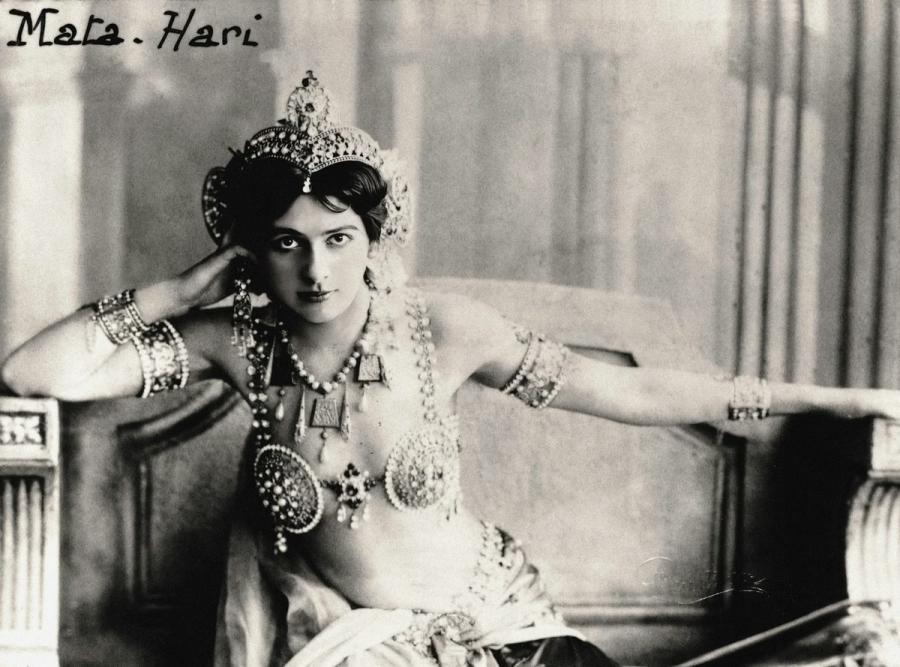Although little evidence was found against her, the French court found her guilty and sentenced her to death.
The most famous woman of the First World War was born on August 7, 1876, in Leeuwarden, the Netherlands.
Mata Hari was a dancer during her life and ultimately became a double agent, which cost her life. She was executed on October 15, 1917, in Paris.
She was born as Margaretha Geertruida Zelle into a wealthy Dutch family. Her father owned a hat shop and bought shares in the oil industry, earning a fortune, so Margaretha and her brother enjoyed a very luxurious childhood, reports Sombor.info
However, her father lost his fortune when Mata Hari was 13, and her parents soon divorced. She then started living with her godfather and attended a teacher training school.
In her twenties, she wanted marriage and family life
At the age of 18, she responded to an advertisement from Rudolf MacLeod, a high-ranking officer in the Dutch army who was looking for a wife. Margaretha and Rudolf got along well at first, married, and had two children.
But after a few years, Rudolf turned out to be violent and an alcoholic, and soon began having affairs with other women.
Margaretha found peace in dancing and joined a dance troupe, where she was allegedly reborn. There, she began using the name Mata Hari, which in Malay means “Sun” or literally “eye of the day.”
Although they briefly reconciled, Hari and Rudi failed to build a life together and divorced in 1902. Their split was accelerated by the death of their two-year-old son.
After the divorce, their daughter Jeanne stayed with her father. Margaretha was not happy with the outcome but admitted he was always a good father to Jeanne and eventually relented.
Mata Hari in her thirties - a famous dancer, craving adventure
After her failed family life, Margaretha dedicated herself to dance and became a circus horse rider under the name Lady MacLeod. In addition, she posed as a model and became increasingly popular and famous.
During this period, she had affairs with various men, some of whom were prominent members of Dutch society. People whispered she was an Indonesian princess or the daughter of a wealthy spice trader.
Although Dutch, she embraced these stories and even made up a tale about coming from an unknown Indonesian island as a princess.
Some say she was the one who popularized erotic dance in French clubs, lifting it from the underground and paving the way for many future dancers in French salons during the interwar period.
In 1915, she performed for the last time. She was known far more for her sensuality and beauty than as an actress, and when her beauty faded, so did her career.
However, during her career, she associated with many politicians who later made her attractive offers.
The dangerous game of her forties - Mata Hari becomes a spy
Although her acting career was over, Mata Hari was happy because she had found the love of her life. He was a 23-year-old Russian pilot named Vadim Maslov, who worked for the French army.
When he was wounded in the war, Mata Hari wanted to visit him, but the protocols did not allow it. Soon, however, representatives of the French government arrived and offered her one million francs if she seduced the eldest son of the German Kaiser Wilhelm II.
Mata Hari accepted the offer, knowing that this money could secure her for life.
In 1916, she met with the German military attaché in Madrid to share French plans with Germany in exchange for another large sum of money.
It remains unclear whether this meeting was arranged so that she could become a double agent or if she simply wanted to set up a meeting with the Kaiser’s son.
In any case, a few months later, the same attaché sent a coded message to Berlin about spy H-21, whose biography matched Mata Hari’s. The French intercepted the message and decrypted it, concluding she was a double agent.
It should be noted that 1917 was a year when spy stories were common. The fact that Mata Hari seduced men in high positions in both the French and German armies did not work in her favor, and suspicion fell on her even before the incriminating telegram was intercepted by the French authorities.
The trial attracted huge media attention. The famous Parisian courtesan was the subject of almost every conversation for weeks. Although little evidence was found against her, the French court found her guilty and sentenced her to death.
She was executed in 1917 in Vincennes near Paris. According to legend, she refused to wear a blindfold and looked her executioners in the eyes until the very last moment of her life.






